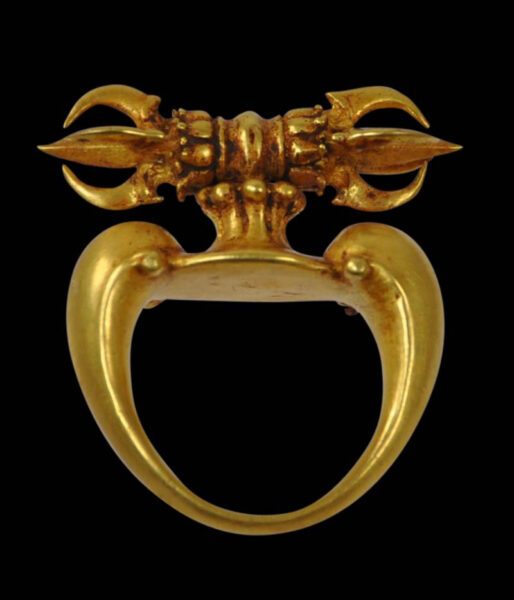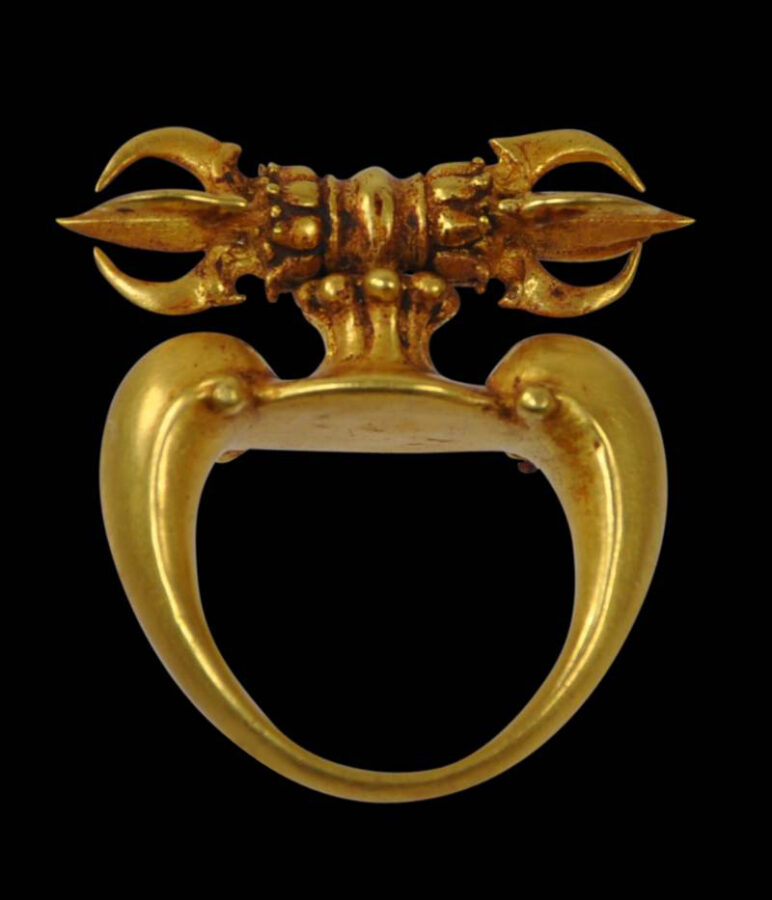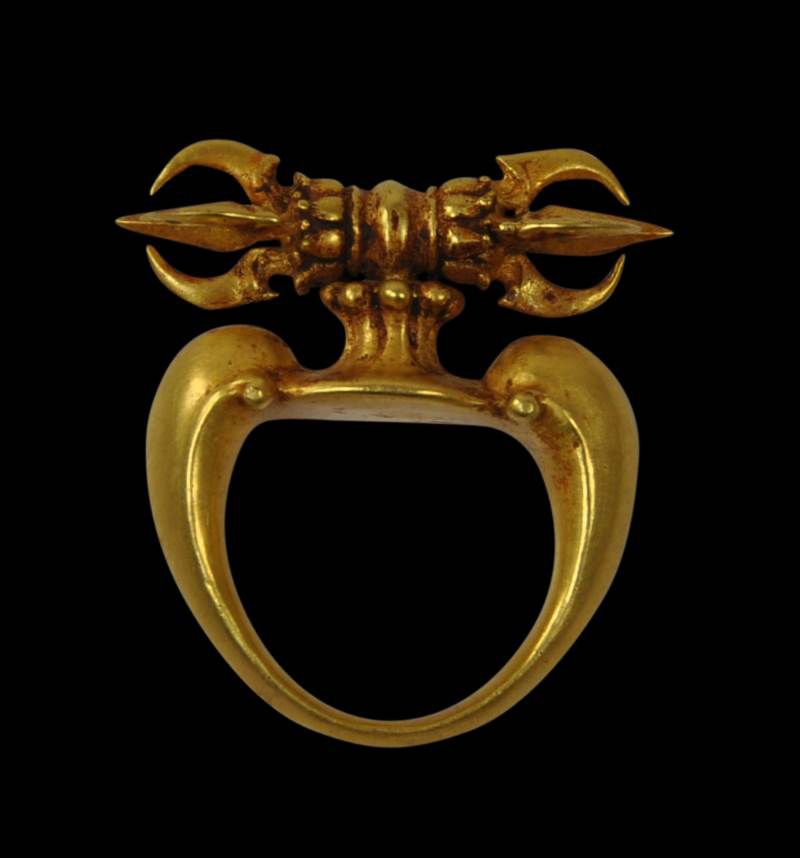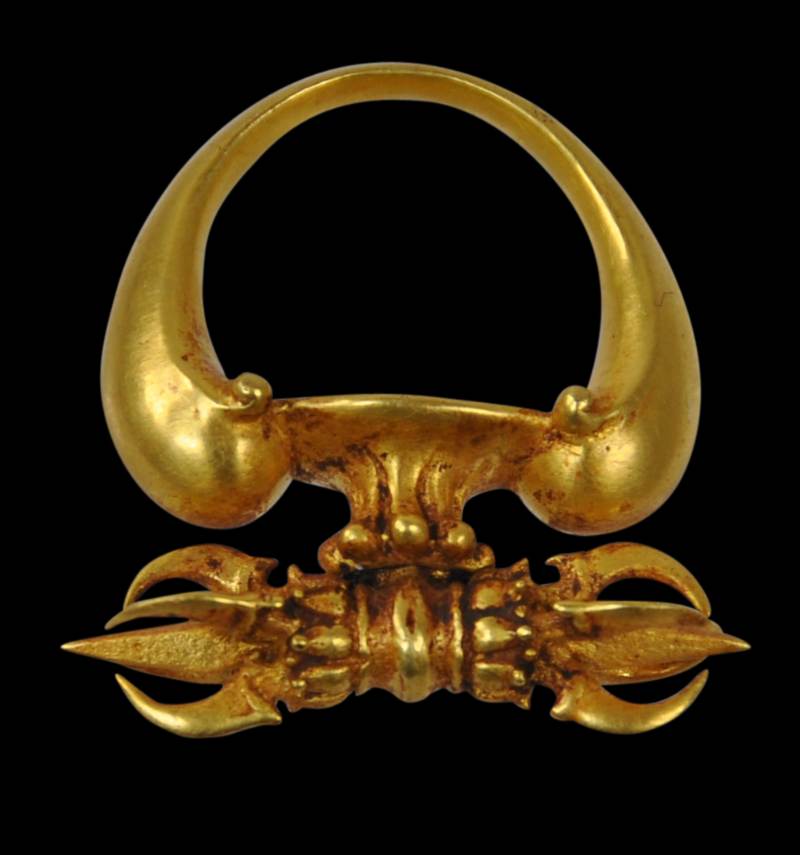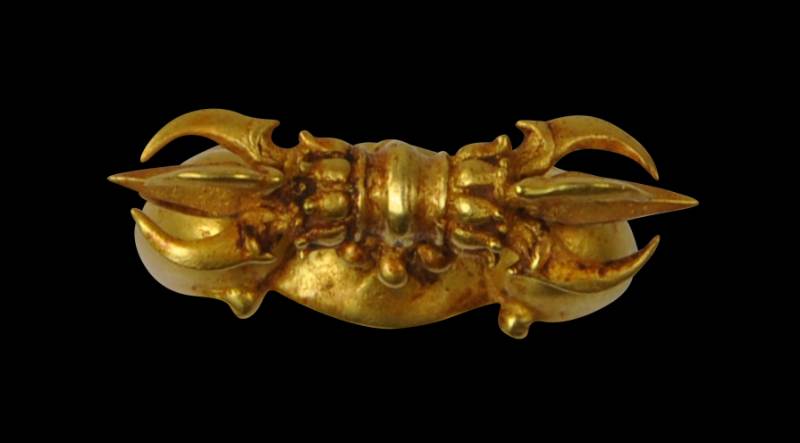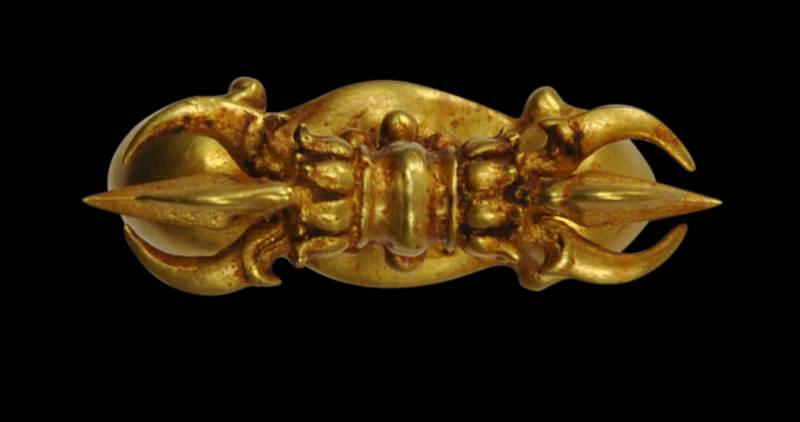This very rare and exceptional solid gold ring dates to 8th-10th century Java. The bezel has been set with a finely-cast and chiselled gold vajra or thunderbolt motif.
Javanese gold rings from this period with bezels mounted with vajras are extremely rare. Very few are known. One example is in the Metropolitan Museum of Art. The construction of the Met’s example differs to that here and it is possible that the hoop of the Met’s piece and the vajra were a later ‘marriage’.
The hoop here has varying thickness consistent with wear that comes from use.
Such a ring would have been intended to endow its wearer with wisdom.
Large quantities of gold jewellery and other items have been found in Central and East Java dating from this period. It was a time when Buddhism and Hinduism seem to have peacefully co-existed at the same time.
The vajra is an important symbol in Mahayana Buddhism. Originally, the thunderbolt was a weapon of Indra from Indian Hindu legend. The vajra emerged as the strongest weapon in the universe and became a symbol of universal compassion of enlightened beings.
The ring is in excellent, wearable condition. It can be worn as a ring or as a pendant, or simply be had as an important collectible.
References
Bremer, S., Goud der Goden: Uitt het oude Java, Wereldmuseum Rotterdam Publishers, 2014.
Geoffroy-Schneiter, B., Asian Jewellery: Ethnic Rings, Bracelets, Necklaces, Earrings, Belts, Head Ornaments, Skira, 2011.
Lunsingh Scheurleer, P., Gold from Java/Goud uit Java, Gemeentemuseum Den Haag/W Books, 2012.
Miksic, J., Old Javanese Gold, Ideation, 1990.


